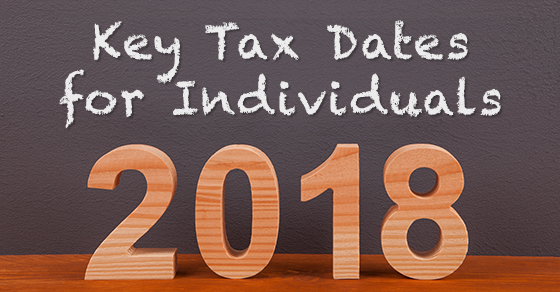News & Tech Tips
The tax impact of the TCJA on estate planning
The massive changes the Tax Cuts and Jobs Act (TCJA) made to income taxes have garnered the most attention. But the new law also made major changes to gift and estate taxes. While the TCJA didn’t repeal these taxes, it did significantly reduce the number of taxpayers who’ll be subject to them, at least for the next several years. Nevertheless, factoring taxes into your estate planning is still important.
Exemption increases
The TCJA more than doubles the combined gift and estate tax exemption and the generation-skipping transfer (GST) tax exemption, from $5.49 million for 2017 to $11.18 million for 2018.
This amount will continue to be annually adjusted for inflation through 2025. Absent further congressional action, however, the exemptions will revert to their 2017 levels (adjusted for inflation) for 2026 and beyond.
The rate for all three taxes remains at 40% — only three percentage points higher than the top income tax rate.
The impact
Even before the TCJA, the vast majority of taxpayers didn’t have to worry about federal gift and estate taxes. While the TCJA protects even more taxpayers from these taxes, those with estates in the roughly $6 million to $11 million range (twice that for married couples) still need to keep potential post-2025 estate tax liability in mind in their estate planning. Although their estates would escape estate taxes if they were to die while the doubled exemption is in effect, they could face such taxes if they live beyond 2025.
Any taxpayer who could be subject to gift and estate taxes after 2025 may want to consider making gifts now to take advantage of the higher exemptions while they’re available.
Factoring taxes into your estate planning is also still important if you live in a state with an estate tax. Even before the TCJA, many states imposed estate tax at a lower threshold than the federal government did. Now the differences in some states will be even greater.
Finally, income tax planning, which became more important in estate planning back when exemptions rose to $5 million more than 15 years ago, is now an even more important part of estate planning.
For example, holding assets until death may be advantageous if estate taxes aren’t a concern. When you give away an appreciated asset, the recipient takes over your tax basis in the asset, triggering capital gains tax should he or she turn around and sell it. When an appreciated asset is inherited, on the other hand, the recipient’s basis is “stepped up” to the asset’s fair market value on the date of death, erasing the built-in capital gain. So retaining appreciating assets until death can save significant income tax.
Review your estate plan
Whether or not you need to be concerned about federal gift and estate taxes, having an estate plan in place and reviewing it regularly is important. Contact us to discuss the potential tax impact of the TCJA on your estate plan.
The TCJA changes some rules for deducting pass-through business losses
 It’s not uncommon for businesses to sometimes generate tax losses. But the losses that can be deducted are limited by tax law in some situations. The Tax Cuts and Jobs Act (TCJA) further restricts the amount of losses that sole proprietors, partners, S corporation shareholders and, typically, limited liability company (LLC) members can currently deduct — beginning in 2018. This could negatively impact owners of start-ups and businesses facing adverse conditions.
It’s not uncommon for businesses to sometimes generate tax losses. But the losses that can be deducted are limited by tax law in some situations. The Tax Cuts and Jobs Act (TCJA) further restricts the amount of losses that sole proprietors, partners, S corporation shareholders and, typically, limited liability company (LLC) members can currently deduct — beginning in 2018. This could negatively impact owners of start-ups and businesses facing adverse conditions.
Before the TCJA
Under pre-TCJA law, an individual taxpayer’s business losses could usually be fully deducted in the tax year when they arose unless:
- The passive activity loss (PAL) rules or some other provision of tax law limited that favorable outcome, or
- The business loss was so large that it exceeded taxable income from other sources, creating a net operating loss (NOL).
After the TCJA
The TCJA temporarily changes the rules for deducting an individual taxpayer’s business losses. If your pass-through business generates a tax loss for a tax year beginning in 2018 through 2025, you can’t deduct an “excess business loss” in the current year. An excess business loss is the excess of your aggregate business deductions for the tax year over the sum of:
- Your aggregate business income and gains for the tax year, and
- $250,000 ($500,000 if you’re a married taxpayer filing jointly).
The excess business loss is carried over to the following tax year and can be deducted under the rules for NOLs.
For business losses passed through to individuals from S corporations, partnerships and LLCs treated as partnerships for tax purposes, the new excess business loss limitation rules apply at the owner level. In other words, each owner’s allocable share of business income, gain, deduction or loss is passed through to the owner and reported on the owner’s personal federal income tax return for the owner’s tax year that includes the end of the entity’s tax year.
Keep in mind that the new loss limitation rules apply after applying the PAL rules. So, if the PAL rules disallow your business or rental activity loss, you don’t get to the new loss limitation rules.
Expecting a business loss?
The rationale underlying the new loss limitation rules is to restrict the ability of individual taxpayers to use current-year business losses to offset income from other sources, such as salary, self-employment income, interest, dividends and capital gains.
The practical impact is that your allowable current-year business losses can’t offset more than $250,000 of income from such other sources (or more than $500,000 for joint filers). The requirement that excess business losses be carried forward as an NOL forces you to wait at least one year to get any tax benefit from those excess losses.
If you’re expecting your business to generate a tax loss in 2018, contact us to determine whether you’ll be affected by the new loss limitation rules. We can also provide more information about the PAL and NOL rules.
Get started on 2018 tax planning now!
With the April 17 individual income tax filing deadline behind us, you may be hoping to not think about taxes for the next several months. For maximum tax savings, however, now is the time to start tax planning for 2018!
Individual tax calendar: Important deadlines for the remainder of 2018
While April 15 (April 17 this year) is the main tax deadline on most individual taxpayers’ minds, there are others through the rest of the year that you also need to be aware of.


 More than a billion back, again!
More than a billion back, again!


